

How To Become a Cruise Ship Captain: Qualification, Lifestyle & Responsibilities
If cruise ships look like giant palaces or flashy kingdoms afloat on the ocean, adorned with all their glitz and glamour, it wouldn’t be an overstatement that the captain in command of these ships is undoubtedly the king of these floating kingdoms.
The captain undoubtedly, as it is in the case of cargo ships too, has the overall and overriding responsibility of everything related to that ship across departments and holds the highest office on the ship.
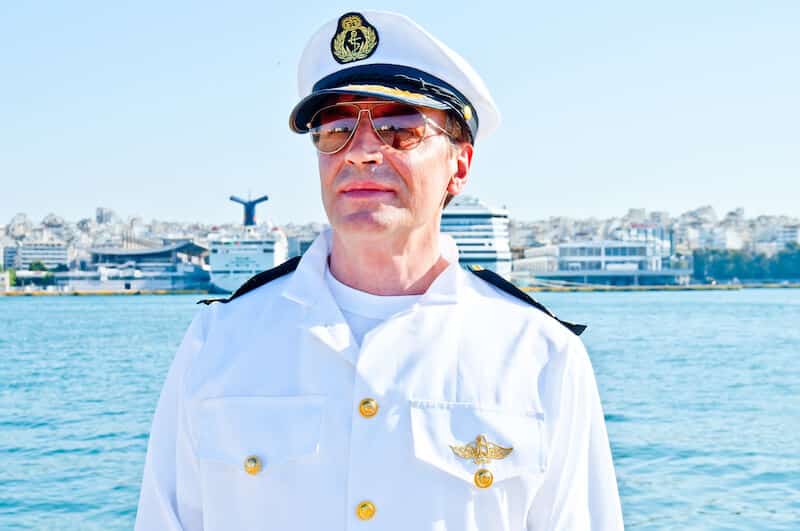
Unlike cargo ships though, cruise ships have multiple departments, divided across deck, engine, hotel and entertainment. Although each department has its own leader, they all have to report to the captain ultimately.
Related reading: Engineering Department Onboard Cruise Ships – A Detailed Guide
Therefore, the role of the captain becomes much more diverse and complex than on cargo ships. A cruise ship captain needs to excel in leadership, management, multi-tasking and decision-making skills in order to be able to successfully preside over the everyday operations of the cruise ship.
While the position of a cruise ship captain is an extremely lucrative, honourable and prestigious rank to hold, it is not without its share of responsibilities. The captain is responsible and answerable for every operation & incident that occurs on the ship under his command.
From manoeuvring the ship in and out of ports, narrow channels , rough seas and heavy weather to overseeing guest comfort and satisfaction, hygiene, quality, food, safety and security, managing ship and shoreside staff, steering committee, managing surveys and coordinating with departmental heads for everyday operations, the captain has to be capable to do it all.
The responsibility of a captain is so huge that they are directly answerable even for mishaps and accidents involving their ships.
Related Reading: How Are Cruise Ships Powered?
Failure to effectively manage crisis situations, make quick & informed decisions and prioritize the safety of lives can be detrimental to the career or in the worst case, the future life of the captain.
The above was highlighted in the case of the captain of the cruise ship Costa Concordia , which met a terrible fate in 2012.
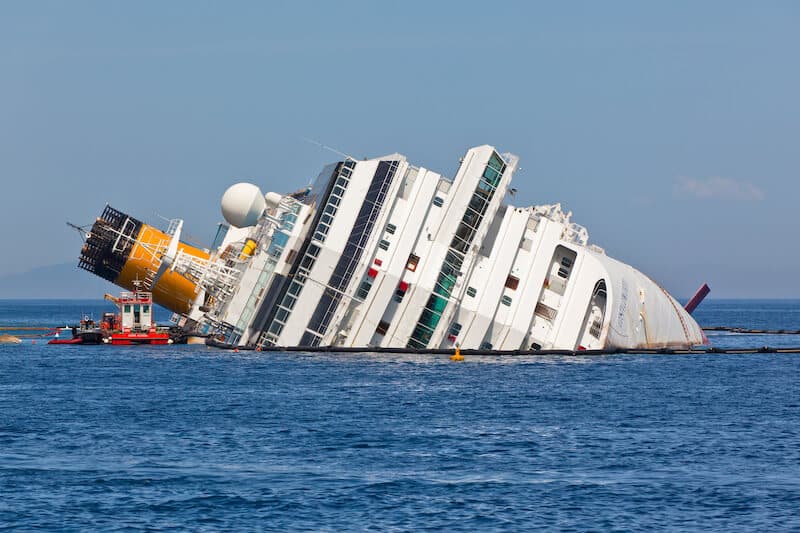
The above vessel capsized after hitting rocks near the island of Giglio near the Italian coast on 13th January 2012. This occurred when the captain ordered the helmsman to steer the ship closer to the island for a maritime salute, a manoeuvre which although the ship had done successfully many times previously was to prove fatal on that night.
Reportedly due to miscommunication between the captain and the Indonesian helmsman, the ship steered closer to the island than usual and by the time the captain realized this and ordered course correction, the ship hit a rock which caused a 174 ft to tear on the port side.
The ship, thereafter started taking in water rapidly and 5 compartments including the engine room got flooded, the ship lost power and started drifting.
Due to wind, loss of propulsion and steering and rapid flooding, the ship changed direction, ran aground and also started listing severely to the starboard side.
The captain, who even after realizing that the ship was flooding, did not immediately call for evacuation or help. In fact, on being contacted by the coastguard, he gave inaccurate information that the ship was only experiencing a loss of power and requested tug assistance.
The result was that by the time he finally gave the order for an evacuation, the ship had started listing severely. In fact, crew members on realizing the grave situation and the captain’s indecision had already launched many lifeboats .
The captain’s indecision, mismanagement of the crisis and concealment of information, in this case, caused the loss of 32 lives as due to the increasing list, more lifeboats could not be launched.
To make matters worse, he fled from the ship even when more than 300 people still remained on board, while it started listing. This included passengers and many crew members.
Despite repeated calls and even orders from an Italian coast-guard officer reminding him of his responsibilities as the captain and for him to return on board, he did not return and shirked from his responsibility of ensuring the safe evacuation of all crew and passengers.
Although with the help of the coastguard and other ships, almost all the remaining persons were eventually evacuated by the next morning, the captain was charged with dereliction of his duties and responsibilities, abandonment of the vessel along with his crew, causing the accident and the death of so many people.
He pleaded guilty despite initially denying and calling himself a scapegoat and was sentenced to a 16-year prison term. Therefore, through the above case, we can understand that how critical the captain’s responsibilities are.
It’s clear that how so ever rosy a captain’s chair and his paycheques may seem, it’s still a highly responsible job as he is accountable for not only his own actions but the actions of other crew-members as well on board his ship.
Qualifications required to become a cruise ship captain
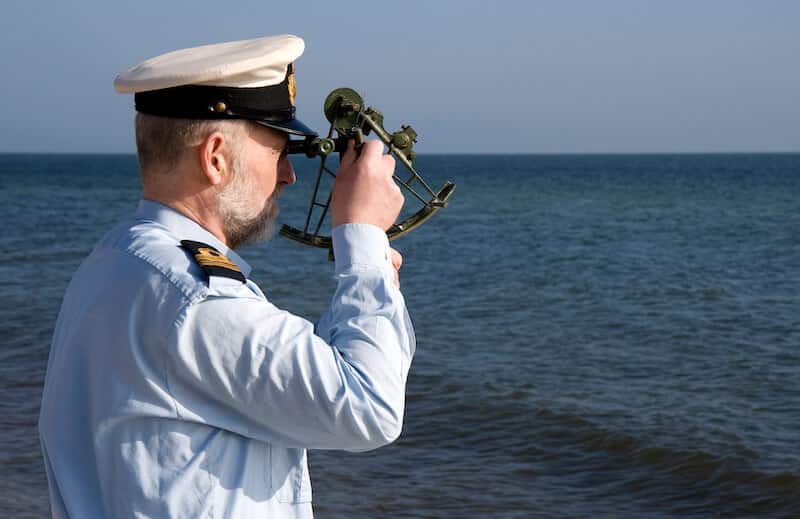
The qualifications required to become a cruise ship captain are not much different from that of merchant ship captains.
A degree or diploma in Nautical Science is followed by onboard training as cadets or apprentice officers lasting several months.
Thereafter, the aspiring candidates are considered eligible for the 2nd Mate examination, on passing which they are qualified to work as 3rd Officers onboard cruise ships.
Further qualifications are acquired by passing subsequent Nautical examinations for Chief Mate and thereafter, Master although there could be some differences in the rules and procedures from country to country.
A Nautical officer on cruise ships too rises through the ranks subject to passing these examinations and also onboard promotions, which depend on performance and experience.
The journey from a Third Officer to a Captain can take several years (usually 15-20 years) as an officer may have to serve at many intermediate ranks for considerable periods of time.
The intermediate ranks are namely Second Officer, First Officer-Navigation, First Officer-Environmental (in many cruise lines this rank is specifically known as Environmental Officer), Chief Officer, Chief Officer-Safety (This rank is also known as Safety Officer), Staff Captain and Captain.
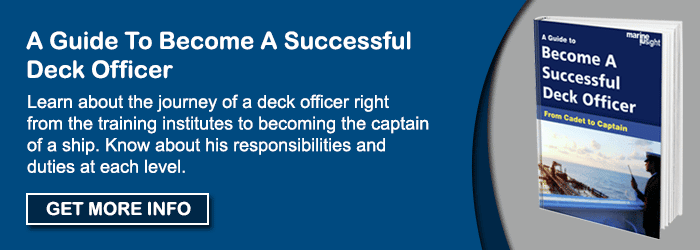
Brief description of ranks on Cruise Ships
Captain: In-command and overall in-charge of the ship. Assumes total responsibility and overriding authority, especially in the matters of safety, security and environmental protection.
Staff Captain: Second in command on board and in charge of the deck/nautical department. Serves as deputy to the captain and should be ready to step into the captain’s shoes in case of unavailability of the captain, emergencies & unforeseen circumstances.
Chief Officer (Safety): Overall in charge of all safety-related equipment, plans, procedures, training and drills onboard.
Chief Officer: Overall in charge of deck operations and maintenance.
Environmental Officer: In charge of overseeing all environmental operations viz. garbage segregation, waste collection & disposal, documentation (ensuring upkeep and updating of environmental record books), upkeep of company environmental policies, local laws of the port state pertaining to environmental protection, environmental training and drills.
First Officer (Navigation): The senior watchkeeping Officer in charge of the Navigational watch on the bridge. Responsible for all navigational and watchkeeping related issues and upkeep of documentation pertaining to them.
Second Officer: Also, an Officer in charge of a navigational watch.
Third Officer: First assistant to the senior watchkeeping Officer in charge of the bridge i.e., First or Second Officer. He reports to the First/Second Officer during a navigational watch on the bridge.
Cadet: Trainee navigational officer, usually a degree or diploma holder, fresh out of a maritime navigational training institution.
Apprentice Officer: Usually a trainee who is undergoing his onboard training as part of a maritime curriculum where the training forms a compulsory part of his degree/diploma course.
The above is a general description of the various ranks of the nautical/deck department and their duties and responsibilities, onboard passenger ships. This is only to give an idea and these ranks and/or duties may vary slightly from company to company.
Related reading: A Guide to Merchant Navy Ranks
Lifestyle and salary of a cruise ship captain
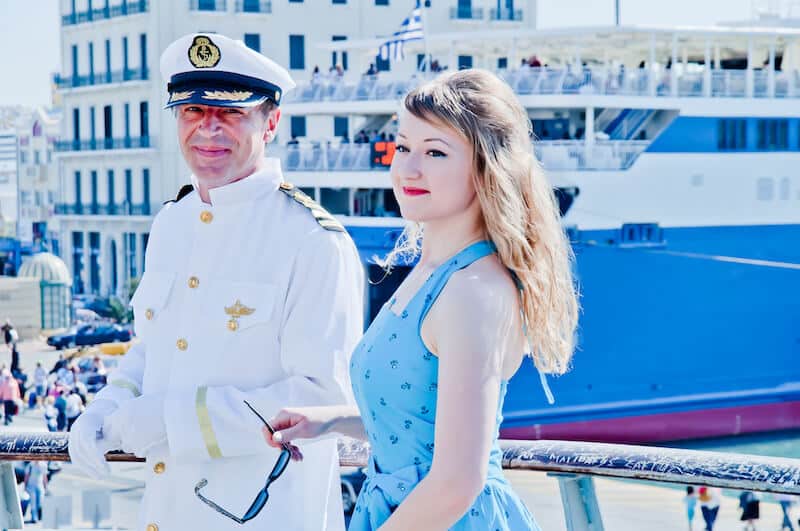
The captain undoubtedly, enjoys a status of a king on board passenger ships, being the ship’s supreme commander, as we have seen and therefore, enjoys many perks and benefits.
These may include five-star accommodation onboard akin to deluxe passenger suites, room-service, company-sponsored first-class flight travel, short contracts of about 2 months and paid vacations, amongst others.
The salary that a cruise ship captain earns is usually in the range of 15000-25000 USD per month, depending upon rank experience, seniority and company pay scale.
To conclude, it would just be fair to say that although a cruise ship captain enjoys a high pay package and many perks and facilities, and is valued as a prestigious position, what comes along with all that glitter is a mountain of responsibility and accountability not only towards his own work but also towards the actions of each and every crew-member on the ship he commands.
He has to lead by example and epitomize excellent management skills in a multifaceted, multi-skilled and multi-disciplinary cruise ship, which has many hundreds of crew-members and thousands of passengers at any given time, as all the crew will look up to him as an inspiration.
He has to ensure that he runs a tight ship by coordinating efficiently with each department on board and the company shoreside.
He also has to make sure that the ship is up-to-date with all the inspections and certifications, is in compliance with all international, flag state and port state rules and regulations.
Most importantly, he should be capable of handling extreme pressure, as he may have to tackle accidents and sudden emergencies (like what happened to the Costa Concordia) and will have to make quick decisions that may impact thousands of lives onboard.
And finally, if after everything, he is unable to salvage his vessel, he will be the one to make the decision to abandon ship and ensure that each and every soul on board is evacuated to safety before himself, because as the captain, he should be the last person to leave the ship, unlike in the case of the Costa Concordia .
Therefore, the crown of the captain may be engraved with many precious jewels, but there is no doubt that it sits heavy on his head!
You might also like to read:
- The Ultimate Guide To Join Merchant Navy
- Watch: Merchant Navy Salary: How Much Do They Earn?
Joining The Merchant Navy After Class 12th in India
- 8 Things to Keep in Mind Before Joining Merchant Navy
- 10 Reasons Why a Career in Merchant Navy is Unlike Any Other
Disclaimer : The information contained in this website is for general information purposes only. While we endeavour to keep the information up to date and correct, we make no representations or warranties of any kind, express or implied, about the completeness, accuracy, reliability, suitability or availability with respect to the website or the information, products, services, or related graphics contained on the website for any purpose. Any reliance you place on such information is therefore strictly at your own risk.
In no event will we be liable for any loss or damage including without limitation, indirect or consequential loss or damage, or any loss or damage whatsoever arising from loss of data or profits arising out of, or in connection with, the use of this website.
Do you have info to share with us ? Suggest a correction
Latest Marine career Articles You Would Like :
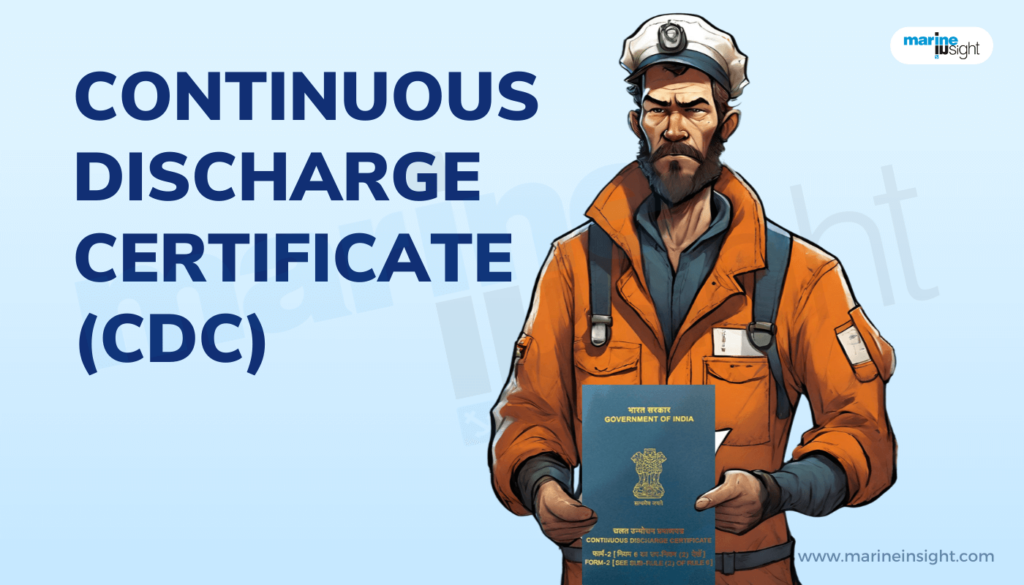
What is a Continuous Discharge Certificate or CDC?
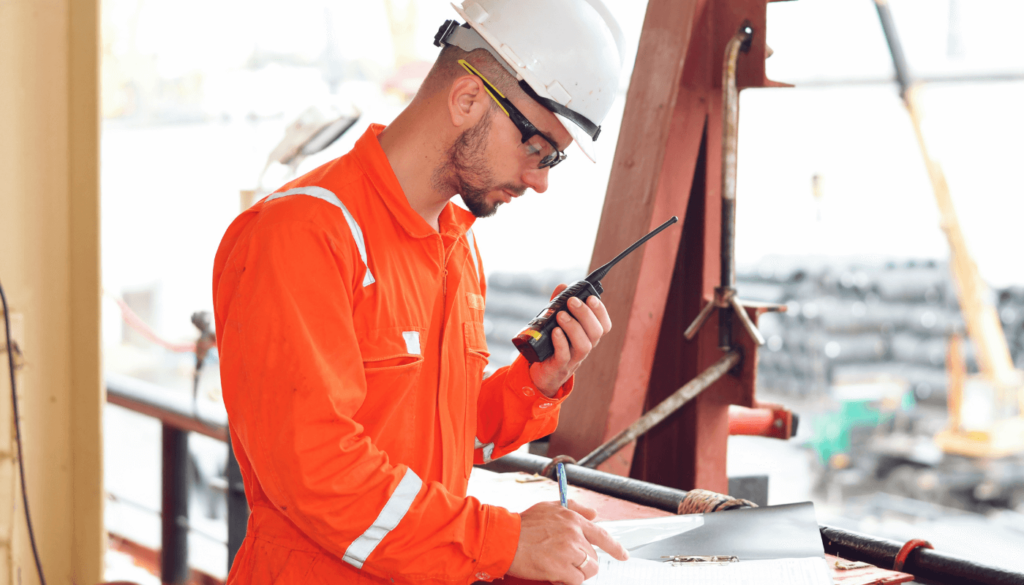
A Guide To Nautical Science Diploma
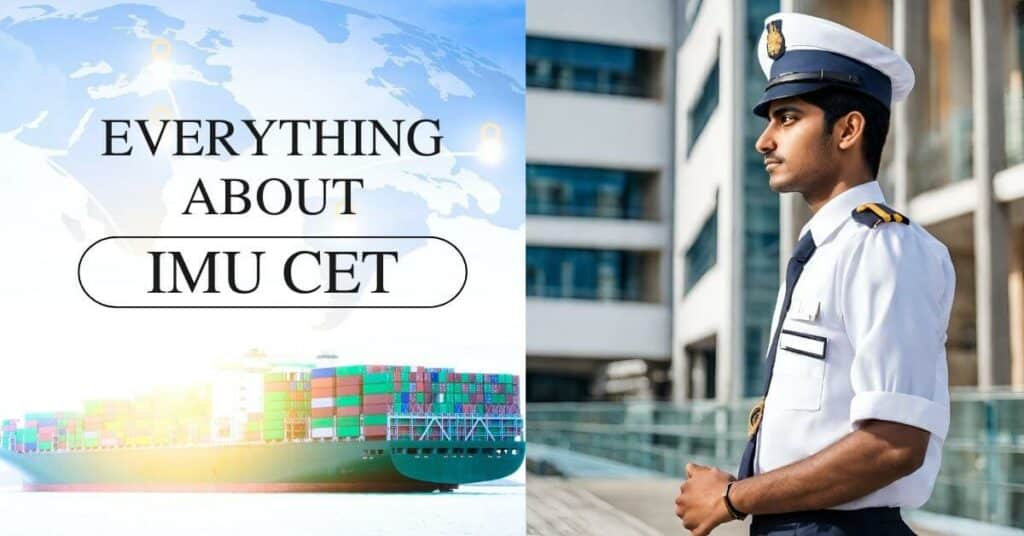
A Guide To IMU CET Exam 2024

Physical Fitness and Medical Requirements to Join Merchant Navy
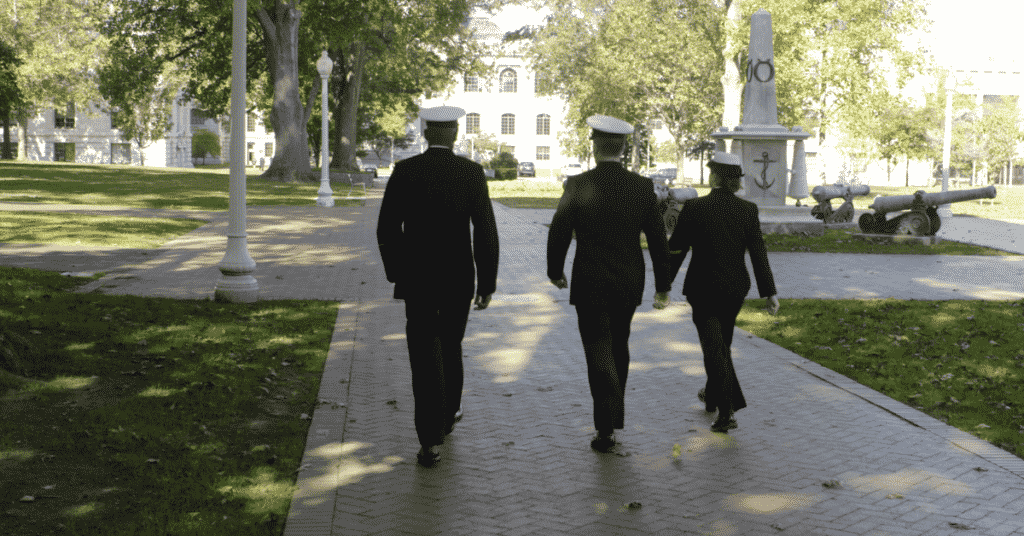
A Guide to Merchant Navy Ranks
Daily maritime news, straight to your inbox.
Sign Up To Get Daily Newsletters
Join over 60k+ people who read our daily newsletters
By subscribing, you agree to our Privacy Policy and may receive occasional deal communications; you can unsubscribe anytime.
Leave a Reply
Your email address will not be published. Required fields are marked *
Subscribe to Marine Insight Daily Newsletter
" * " indicates required fields
Marine Engineering
Marine Engine Air Compressor Marine Boiler Oily Water Separator Marine Electrical Ship Generator Ship Stabilizer
Nautical Science
Mooring Bridge Watchkeeping Ship Manoeuvring Nautical Charts Anchoring Nautical Equipment Shipboard Guidelines
Explore
Free Maritime eBooks Premium Maritime eBooks Marine Safety Financial Planning Marine Careers Maritime Law Ship Dry Dock
Shipping News Maritime Reports Videos Maritime Piracy Offshore Safety Of Life At Sea (SOLAS) MARPOL
WAIT! Did You Download 13 FREE Maritime eBooks?
Sign-up and download instantly!
We respect your privacy and take protecting it very seriously. No spam!
WAIT! Did You Download 12 FREE Maritime eBooks?
What is a Cruise Ship Pilot? And What Do They Do?
Disclosure: This post may contain affiliate links. We may receive compensation when you purchase via my links at no cost to you. See my disclosure for more information.
When a majestic cruise ship approaches port, you might see a smaller boat bringing a person on the vessel. The person in question is the pilot. Who guides the captain and the ship through the port.
To learn more, I spoke with Captain Nik Antalis on my Serenade of the Seas cruise to learn more about what happens when a cruise ship pilot boards the ship.
These pilots are the unsung heroes of the seas, adept at navigating through congested waterways and guiding behemoth cruise liners to their berths. It’s a high-stakes ballet performed between ships of vastly different sizes, and it requires nerves of steel. In this article, we’ll dive into the world of these fearless mariners, exploring what it takes to be a cruise ship pilot and why their role is indispensable for every port of call.
Table of Contents
What is a Cruise Ship Pilot?
A cruise ship pilot serves as the maritime guide for vessels entering ports or complex bodies of water. A pilot takes command of the cruise ship during one of the most critical times of any voyage: entry and departure from port.
It’s a role defined by precision, nerve, and unerring skill, ensuring the safety of massive ships and the protection of local environments and infrastructure.
Maritime pilots board the ship while in motion on a smaller boat known as the pilot ship.
Once on board, the pilot becomes the ship’s guiding intellect. Pilots collaborate with the captain and crew to maneuver through tightly packed port areas.
Pilots have immense knowledge of the port, almost like a local tour guide. The captain relies on the pilots’ knowledge to navigate currents, water depths, weather conditions, local winds, tides, and port traffic . This specialized expertise is critical in safely guiding massive vessels to their berth without incident.
At the helm, the pilot often assumes dual responsibilities, becoming a docking master when the ship reaches the harbor. This means they’re tasked with navigating and expertly docking the vessel—a task that demands a synergetic effort with ground crews and tugboats, if required.
Responsibilities of a Cruise Ship Pilot

When a cruise ship approaches a harbor, the role of a cruise ship pilot becomes pivotal.
After meeting the bridge team, the port pilot presents their plan for the passage.
They discuss the route, weather conditions, tides, wind, clearance, traffic, hazards , and other important information.
The captain and pilot compare plans to determine the best course. The process is known as the “Master Pilot Exchange.”
Like all great plans, it may need to change on the fly. Navigating a port is a dynamic exercise as conditions are constantly changing.
During a manoeuvering, the pilot relays verbal instructions. The pilot dictates the speed, thrusters, position of tug boats, and any other vital information to guide the captain through the waterway.
While pilots may conduct the ship through the passage, the captain and team always dock and undock the boat.
In ports where mooring is particularly difficult, the port may employ “docking pilots” to aid the maneuver.
A cruise ship pilot’s responsibilities extend well beyond simple navigation. They also ensure that the ship’s entry and departure from the port are safely conducted. This job involves a seamless collaboration with the ship’s captain and crew.
Communication here is critical as the pilot advises on maneuvers, speed adjustments, and course-setting, providing specialized guidance tailored to each port’s unique environment.
Close coordination with tugboats and the dock crew is also essential, as these elements work together to dock and undock the vessel. The pilot orchestrates this complex dance, which requires a firm grasp of local maritime regulations and procedures and the ship’s capabilities.

The cruise ship pilot also considers the weather conditions; strong winds and unforeseen weather changes can significantly influence a ship’s behavior. Being up to date with modern technology, they use sophisticated navigational tools to help mitigate these challenges, ensuring the ship’s and its passengers’ safety.
Avoiding collisions with other vessels is another critical responsibility in bustling port areas. Pilots must be hyper-vigilant when guiding the cruise ship through these congested areas, frequently adjusting their strategies to avoid other boats and maintain a safety perimeter around the ship.
Why Are Pilots Necessary?

The conditions of the port can be difficult for captains to navigate. Pilots are highly trained mariners with in-depth knowledge of ports and waterways.
A cruise ship relies on a pilot’s knowledge to navigate and maneuver the vessel safely. Where port pilots are familiar with the port, captains and the ship’s officers have experience with the boat.
Studies of recent maritime incidents highlight the importance of pilotage in avoiding accidents. Statistics show that pilotage dramatically reduces the occurrence of marine incidents, underscoring the cruise ship pilot’s role in maintaining safety standards.
In addition to preventing accidents, pilots also serve as environmental stewards, actively working to minimize the environmental impact of ship movements. This involves carefully planning routes that avoid sensitive marine habitats and remaining vigilant for wildlife, helping preserve coastal regions’ ecological balance.
How Do You Become a Cruise Ship Pilot?
Becoming a cruise ship pilot takes years of training and experience.
The pilot hiring process varies by port but typically includes an interview and completion of a knowledge test.
Training takes around six years but may take longer if the pilot works with larger ships. The training helps pilots become familiar with the port area.
Many ship pilots are former ship captains. They may be former container ship captains, coast guard, military officers, or cruise ship captains.
How Does a Pilot Get on the Cruise Ship?

Pilots take a small boat to drive alongside the cruise ship. Once the pilot boat is alongside the cruise ship, the pilot climbs a ladder on the vessel’s side and makes their way onto the boat.
Pilot boats can travel at speeds of up to 30 knots. And they have powerful acceleration to escape trouble when needed.
Two crew members are on the pilot boat: a cockswain and a deckhand.
The cockswain is responsible for the safety of the pilot. If the conditions are unfavorable, the cockswain decides whether or not to go out to sea.
Cruise ships may slow to 8 to 15 knots for the pilot to climb aboard safely.
Once alongside the boat, the pilot climbs the “pilot ladder” and makes their way onto the ship through an opening in the hull (sometimes called a shell door).
A licensed deck officer greets the pilot and communicates with the bridge via radio.
Do Pilots Ever Fall?

Climbing aboard a moving vessel is extremely dangerous. While not common, pilots can fall into the water.
Pilots risk being swept under the cruise ship or pilot boat if they fall into the sea. And in cold climates, such as Alaska, there’s the risk of hypothermia.
Ship pilots have a dangerous job. And pilot teams regularly train for man overboard drills .
Disembarking the ship is a dangerous operation. While descending, pilots climb down the ladder, facing backward, before jumping onto the pilot boat.
Is the Pilot or Captain in Control of the Ship?

A maritime pilot may conduct the vessel on the bridge only with the captain’s permission.
The captain always remains in control of the vessel. Pilots are essential in navigating port areas, but the captain is responsible for the ship.
The one exception is the Panama Canal. Pilots have complete control and responsibility of the ship in transit of the Panama Canal.
How Much Do Port Pilots Make?
According to Salary.com , US port pilots have an average annual salary of $107,884. Some ports, such as L.A.’s port, pay harbor pilots as much as $400,000 annually.
Marcello De Lio
Leave a Reply Cancel Reply
Your email address will not be published. Required fields are marked *
Name *
Email *
Add Comment *
Save my name, email, and website in this browser for the next time I comment.
Post Comment
This site uses Akismet to reduce spam. Learn how your comment data is processed .
Trending now

- PRO Courses Guides New Tech Help Pro Expert Videos About wikiHow Pro Upgrade Sign In
- EDIT Edit this Article
- EXPLORE Tech Help Pro About Us Random Article Quizzes Request a New Article Community Dashboard This Or That Game Popular Categories Arts and Entertainment Artwork Books Movies Computers and Electronics Computers Phone Skills Technology Hacks Health Men's Health Mental Health Women's Health Relationships Dating Love Relationship Issues Hobbies and Crafts Crafts Drawing Games Education & Communication Communication Skills Personal Development Studying Personal Care and Style Fashion Hair Care Personal Hygiene Youth Personal Care School Stuff Dating All Categories Arts and Entertainment Finance and Business Home and Garden Relationship Quizzes Cars & Other Vehicles Food and Entertaining Personal Care and Style Sports and Fitness Computers and Electronics Health Pets and Animals Travel Education & Communication Hobbies and Crafts Philosophy and Religion Work World Family Life Holidays and Traditions Relationships Youth
- Browse Articles
- Learn Something New
- Quizzes Hot
- This Or That Game
- Train Your Brain
- Explore More
- Support wikiHow
- About wikiHow
- Log in / Sign up
- Occupations
- Transport Careers
How to Become a Cruise Ship Captain
Last Updated: July 10, 2023 Approved
wikiHow is a “wiki,” similar to Wikipedia, which means that many of our articles are co-written by multiple authors. To create this article, 16 people, some anonymous, worked to edit and improve it over time. There are 8 references cited in this article, which can be found at the bottom of the page. wikiHow marks an article as reader-approved once it receives enough positive feedback. In this case, 85% of readers who voted found the article helpful, earning it our reader-approved status. This article has been viewed 286,640 times. Learn more...
A cruise ship captain is the master of a cruise vessel. Captains usually have a college degree along with years of experience in shipping or naval navigation. They must be very experienced in analyzing speed, weather conditions and other factors that affect a ship's navigation, while controlling a staff of officers. The skills required of a captain include communication, customer service, delegation, and organization. The US Department of Labor Statistics expects the demand for ship captains to go up by 17 percent until 2016, but the competition for cruise ship captain positions will remain competitive. In fact, you may need to finish 4 to 8 years of schooling and obtain decades of experience to qualify. If your dream is to become a cruise ship captain, begin your preparations now and create a backup plan for alternate careers that use the same set of qualifications.
Receiving the Right Education

- In the United States, many aspiring captains attend a Maritime High School, which are generally located on the coasts or Great Lakes. Maritime High Schools are competitive in admissions and follow a particular curriculum established by the U.S. Maritime Administration, emphasizing English, math, and science with additional courses in maritime skills, law, and career training. Because this is such a competitive line of work, a diploma from a Maritime High School is highly recommended to increase your chances of becoming a cruise ship captain.

- The US Government recommends three units of math (algebra, geometry, and trigonometry); three units of English; one unit of physics or chemistry; and eight additional units in additional math and/or science, foreign languages, economics, and social studies.
- If possible, look for part-time work (during evenings, weekends, and summer breaks) in a shipyard or on board a ship or sea-going vessel of any kind. You will learn about ship parts, worker roles, chain of command, and ship repair, as well as gaining experience on the sea, which will help you to know for sure that a career as a captain is ideal for you. If you do not live near the sea or large lakes, try to find summer work on board a ship.

- A diploma and an above-average grade point average in high school are necessary for admission to a Maritime Academy, and even if you do not choose to attend an academy or college, you must have a high school equivalency to gain additional career experience at the helm of a ship.

- Attending a Maritime Academy is the fastest track to move up the ladder on a maritime vessel. Maritime Academies in the United States include California, the Great Lakes, Maine, Massachusetts, Texas A&M, and the U.S. Merchant Academy. These are funded by the United States Maritime Administration to ensure that the government has a steady stream of properly trained merchant marine officers. [1] X Research source
- In the event that you cannot find a position as a cruise ship captain (which is unfortunately a high chance, given how competitive the industry is), a diploma from one of these schools can help you find employment with the US government or as a merchant marine captain. If you are based in another country, seek naval education or experience, according to the best path in your region.
Obtaining Needed Experience and Certifications

- If possible, try to get an internship on a cruise ship. This will help you gain experience and determine that this is the right career choice for you. If you have the opportunity to do more than one internship while in college, try to get one on a cruise line and one on a commercial or government ship. This will help you to see the difference in these career paths.

- Although your career goal is captain, you have to start on the deck to gain needed experience. If you did not get a Bachelor's degree, you will have to spend thousands of hours -- and many years-- gaining experience as a deckhand before you can move up the ship hierarchy and become a deck officer or third mate, which qualifies you to take exams to become a captain. If you did get the Bachelor's degree, you can skip the deckhand stage altogether. [2] X Research source
- The exams test your knowledge and readiness and also entail a thorough background check, including a review of your criminal record and citizenship as well a physical exam and vision and hearing evaluations. There are fees associated with these credentials, ranging from $50 to $100 USD. [3] X Research source

- A Master's degree is not always necessary to get a position, but because cruise ship positions are highly sought after, it might make a difference in your job search. Many cruise ship captains do not have a Master's degree. You will have to decide if your experience is enough or if you could benefit from a Master's degree on your resume; for instance, if you did not attend a maritime high school or Marine Academy, and/or if you have not had many years of experience on a vessel, you may need the additional education to be a viable candidate for a position on a cruise ship. [4] X Research source

- Certification exams require physicals, vision tests, drug screenings and written and practical exams. Merchant marine academies train their students in the topics that will be featured on these exams. People who gain their qualifications through experience may need to take exam prep courses to ensure they pass the exams. There are fees associated with these credentials, ranging from $50 to $100 USD. [5] X Research source

- The marine captain's license also qualifies you for positions with the United States government, including the Coast Guard. [6] X Research source
Finding Work

- In the vast majority of cases, marine captains are promoted after serving as deck officer or third mate on that ship. The time until promotion varies by organization and company, as well as by your own performance in each position.

- For example, most officer positions for Norwegian Cruise Lines are given to Norwegian citizens. The exception is their ship Pride of America, which only hires American citizens. [7] X Research source You will need to check the website of cruise line companies to find out their hiring requirements for particular job openings.

- Continue working as a merchant marine captain. According to the US Bureau of Labor Statistics, jobs in this industry are growing with an expected rate of 14% growth between now and 2022, outpacing the number of new captains available, so the odds of finding a position in a freight ship are much higher than the odds of finding a position as a cruise ship captain. [8] X Research source
- Consider joining the U.S. Armed Forces or working for the U.S. government. Particularly if you attended a State Maritime Academy, the United States seeks capable and well trained captains who can meet its national security needs. [9] X Research source
Community Q&A
Things You'll Need
- High school diploma/GED certificate
- Merchant marine degree
- Deck hand experience
- Rating exam prep course
- Transportation Worker Identification Credential
- Merchant Mariner Credential
- Marine captain's license
- Marine captain experience
You Might Also Like

- ↑ https://www.marad.dot.gov/education/maritime-academies/
- ↑ http://www.allaboutcruisesandmore.com/how-to-become-a-cruise-ship-captain
- ↑ http://www.ecfr.gov/cgi-bin/text-idx?c=ecfr&sid=ae63e8c8b8556b036cfde87e4a7bb8de&rgn=div5&view=text&node=46:1.0.1.2.10&idno=46
- ↑ http://study.com/articles/Ship_Captain_Job_Duties_and_Information_About_Becoming_a_Ship_Captain.html
- ↑ http://study.com/become_a_ship_captain.html
- ↑ https://www.ncl.com/about/careers/shipboard-employment/faq
- ↑ http://study.com/articles/Become_a_Boat_Captain_Step-by-Step_Career_Guide.html
About This Article
To become a cruise ship captain, start by focusing on getting good grades in math, English, and science courses in high school so you’ll be eligible to attend a Maritime Academy after you graduate. While you’re still in school, try to find a job in a shipyard or on board a ship to learn the ins and outs of being at sea. Then, while you’re attending a university, apply for an internship to get practical experience and make connections. After graduation, look for a job as a third mate or deck officer on a ship to develop the qualifications you’ll need as a captain. To learn how to qualify for the marine captain’s licensing exam, keep reading. Did this summary help you? Yes No
- Send fan mail to authors
Reader Success Stories
Susan Altadonna
Oct 12, 2016
Did this article help you?

Conor Russell
Apr 12, 2018
Dalia Rivera
May 17, 2017
Ajay Aloshious
Jun 13, 2017
May 31, 2017

Featured Articles

Trending Articles

Watch Articles

- Terms of Use
- Privacy Policy
- Do Not Sell or Share My Info
- Not Selling Info
Don’t miss out! Sign up for
wikiHow’s newsletter
We make money helping people book cruises, and from advertisers / affiliate partners. As an Amazon Associate, I earn from qualifying purchases.
How To Become a Cruise Ship Captain
Many people enjoy exploring open water and desire the freedom to live their life on the sea. For these reasons, individuals are drawn to being a cruise ship captain. In order to have this job, it requires a lot of work and training. Cruise ship captains seem to have a glamorous job and this is another reason why people aspire to have this vocation. However, the reality of being a cruise ship captain is far less glamorous and involves a lot more work.
Roles and Responsibilities Of a Cruise Ship Captain
Cruise ship captains have a lot of responsibility and they are known as the "master" of their ship. This job is far from easy, but can be extremely rewarding. Cruise ship captains are in charge of overseeing their crew of thousands of people to be sure that every gets done and is compliant with both international and local laws. Other responsibilities include maintaining and utilizing complex navigational systems and engines, watching the embarkment and disembarkment of passengers to ensure that every person is accounted for and knowing that safety equipment and measures are working. Additionally, cruise ship captains must enforce safety procedures, navigate the ship and communicate with ports and other nearby vessels. Another skill that is important for cruise ship captains is the ability to socialize. It is important for cruise ship captains to socialize with passengers, such as making small conversations and even hosting dinners. As the cruise ship captain is in charge of the ship, many people will report to them, such as the hotel manager, cruise director and the head engineer. The cruise ship captain is the point person and responsible for the safety of the ship and its passengers. It is evident that the role of a cruise ship captain is a large amount of responsibility and hard work.
What Education Do Cruise Ship Captains Need?
The first step of becoming a cruise ship captain is obtaining your high school diploma. After that, it is required that candidates possess either a bachelor's or master's degree of marine science or marine engineering. It is preferred that the bachelor's or master's degree is obtained through a maritime college or academy. Additionally, it is critical that individuals have an in-depth and holistic understanding of logistics, navigation, maritime and safety laws and management. Furthermore, it is critical that potential cruise ship captains have extensive training. Cruise ship captains must receive a captain's license from a federal maritime authority. However, receiving this license can take up to ten years. It takes more time to become a cruise ship captain than a brain surgeon. For most cruise ship captains, they earn their bars 18 to 22 years after beginning the process.
Exams and Certifications For Cruise Ship Captains
Maritime academies train potential cruise ship captains, which is the fastest way to receive training. However, some academies require service in the armed forces. After the four-year program, potential cruise ship captains receive their bachelor of science degree and a Coast Guard license as Third Mate. In order to become certified, potential cruise ship captains need a Transportation Work Identification Credential that is provided by the Transportation Security Administration that helps to locate cruise ship captains. Additionally, cruise ship captains need their Merchant Mariner Credential that is attained through the Department of Homeland Security. Both certifications entail physical examinations, drug tests, written exams and a vision test. Additionally, it is required for potential cruise ship captains to complete their captain licensure exams. After at least 10 years of work experience, individuals are able to take this exam.
Skills All Cruise Ship Captains Must Have
It is important that a cruise ship captain has a wide variety of skills, as they are not only navigating the boat, but are responsible for overseeing employees to guarantee a safe arrival. Important skills include leadership abilities, customer service and communication skills. Additionally, it is important that they have knowledge of administrative abilities so they can run the ship efficiently. Other necessary skills include analytical and problem-solving abilities, staying calm in stressful situations and the ability to work successfully under pressure.
Questions People Have About Cruise Ship Captains
- Can Captains Marry People at Sea?
Yes! They can, if they have the required legal rights. In reality, weddings at sea are pretty uncommon. However, cruise ship captains can conduct the ceremony if they are ordained. In order for a cruise ship captain to preform the marriage, they must be a judge, a justice of the peace, a minister, or a legally recognized officiant such as a Notary Public.
- How Long Are Cruise Ship Captains At Sea?
It depends on each individual cruise. It is critical that cruise ship captains can be on a ship for extended periods of time, as it is not uncommon for a cruise ship captain to be on the sea for weeks, or even months.
Harbor pilots can make $434,000 a year, face high fatality rates, and are responsible for guiding hulking cargo ships into ports
- Harbor pilots are among the highest-paid city employees but it's a risky job.
- The local pilots bring a ship in from miles out at sea to within inches of the port's pier.
- Christopher Mims breaks down how packages arrive at your door within a matter of days in his book, "Arriving Today."

Harbor pilots have one of the highest-paid — but simultaneously riskiest — jobs in the transportation industry.
The average harbor pilot at the Port of Los Angeles makes $434,000 a year, but also faces a one in 20 chance of dying on the job, according to a book from The Wall Street Journal's Christopher Mims that was published in 2021. The book, "Arriving Today: From Factory to Front Door — Why Everything Has Changed About How and What We Buy," breaks down the complicated dance that brings a shipment from Asia to US buyers in a matter of days.
Harbor pilots are some of the highest-paid municipal employees and represent a crucial part of a shipment's journey. The average marine pilot in the US makes between $154,000 to $285,000 in total annual compensation, according to GlassDoor.
Any cargo ship looking to come into a port must pay local pilots to safely bring the ship in to dock. The role is highly risky, as the pilots face the dangers of being run over by a massive cargo ship, pitched overboard in rough waters, or slammed between two boats.
"Despite happening a thousand times a day all across the globe, despite myriad safety precautions, if you're a harbor pilot, doing your job can kill you," Mims writes.
Related stories
The job is also incredibly high stakes and requires hyper-specialized skills. The pilot is responsible for vessels that can weigh over 200,000 tonnes and be worth over $100 million. A harbor pilot brings a ship in from miles out at sea to within mere inches of its unloading spot alongside the pier.
The harbor pilot first approaches the massive skyscraper-sized cargo ship from a 55-foot long speedboat, according to Mims, who described how LA port harbor pilot Captain John Betz maneuvered the Netherlands, a Chinese-owned ship from Cosco Shipping Lines. From the speedboat, the pilot must climb a rope ladder onto the freighter — often while both boats are pitching in opposite directions. The move represents one of the most dangerous moments during the entire process.
"I've been chased up the ladder by the boat," Craig Flinn, another harbor pilot, tells Mims. "The percentage of survival is minimal if you go in the water in heavy seas, even with a life vest," he said.
Once aboard the freighter, Mims explains the pilot is given a sheet detailing every little element of the ship and the obstacles it faces on its course into port. Without touching a single control on the ship, Betz directs every movement of the Netherlands via verbal commands to the crew by using his iPad, a combination of GPS and navigational beacons, the ship's onboard automated system, as well as his own judgement. The pilot also directs the crew operating the tugboats that attach to each side of the ship as it comes into the port.
Once the vessel is close enough, the freighter is maneuvered predominantly using its residual momentum and the slow pull of the tugboats.
Mims calls the final steps of turning the hulking ship into its spot on the pier "the equivalent of a stunt driver parallel parking a car in a spot that's just long enough for it, after coming in at high speed, throwing over the wheel, and skidding sideways to within an inch of the curb, tires smoking."
A harbor pilot's job is complete once the ship is safely tucked away in its berth. Ultimately, harbor pilots represent a little-known, but crucial part of the supply chain. Around 90% of US goods arrive by ship.
Read Mims' book to learn more about the intersection between technology and manpower that fuels the global supply chain and brings everyday goods to customers' doors.
Watch: The true cost of America's war machines
- Main content
Vessel Entry and Clearance Procedures
Vessel entry and clearance procedures for san diego harbor.
The following information is provided as a procedural resource for ALL vessels entering San Diego Harbor from foreign waters, and for vessels over 300 gross tons returning from a domestic or international voyage.
Long term berthing of large vessels | 619.686.6345 Mon-Fri, 8:00 AM to 5:00 PM.
Pre-Arrival Notice to the National Vessel Movement Center
(Only applies to vessels over 300 gross tons) Vessels over 300 gross tons must notify the U.S. Coast Guard (USCG) National Movement Center (NVMC) ninety-six hours prior to entering San Diego Harbor regardless if the vessel is on a domestic or international voyage.
The NVMC provides assistance 24 hours per day, 7 days a week by phone, email, or FAX.
- Telephone: 800.708.9823 or 304.264.2502
- Email Address: [email protected]
- FAX Number: 800 547.8724 or 304.264.2684
- Tech Support: [email protected] Mon - Fri, 0730-1600 EST via email.
All time-sensitive inquiries should be addressed to the NVMC via one of the above 24x7 contact methods.
Electronic submittals require an account be generated on the NVMC website at http://www.nvmc.uscg.gov/ . Click on the "Submit to NOA on line" icon to create an account. Then follow the submittal instructions.
Pre-Arrival Notice to U.S. Coast Guard Sector San Diego
(Applies to vessels 100 gross tons or more) (Note: Vessels with fully operational Automatic Identification System (AIS) are exempted from making requests.) Vessels bound for San Diego Bay or Mission Bay shall contact USCG Sector San Diego for permission to enter either by telephone at 619-278-7033 or via Marine VHF-FM Channel 16 prior to entering U. S. Territorial Waters (12 miles offshore). Further radio communication regarding permission to enter the harbor will be moved to Marine VHF Channel 22A.
USCG Sector San Diego Joint Harbor Operations Center (JHOC) Contact Information:
- Telephone: 619.278.7031 (24 hours)
- Radio Contact: Marine VHF Channel 16 (24 hours)
- Address: 2710 North Harbor Drive, San Diego, CA 92101
- San Diego Bay is served by the San Diego Bay Pilots Association, Inc.
- The pilot office and boat monitor VHF-FM channel 16 (156.80 MHz) one hour prior to a vessel’s scheduled arrival.
- VHF-FM channel 12 (156.60 MHz) is used as a working frequency.
- Arrangements for pilots are made by telephone 619.233.3096 or by calling “Pilot San Diego” by radio; the pilots request the incoming vessel’s estimated time of arrival and draft.
- A 2-hour advance notice is required if any changes occur.
Pilots board vessels in the vicinity of San Diego Bay Approach Lighted Whistle Buoy 1 (32° 37.3’N, 117° 14.7’W). When boarding, pilots request vessels maintain a speed of 7 knots and rig the pilot ladder about one meter above the water on the starboard side or as directed by the pilot.
The San Diego Unified Port District operates a VHF-FM radio station from Harbor Control Headquarters at Shelter Island for contacting merchant ships, port pilots, and other nearby stations. Channel 16 (156.80 MHz) is for distress, urgent, and safety messages, and for calling; channel 12 (156.60 MHz) is for port operations. The station call sign is KJC-824.
Click here for Port of San Diego Tariff No. G-1 vessel pilotage requirements
Customs, Agriculture, and Immigrations Services
(This applies to all vessels) All vessels entering San Diego Harbor from an international voyage are required to submit to an inspection by Customs Border Protection (CBP). CBP now provides the combined services of Customs Inspection, Agricultural Inspection, and Immigration Clearance.
Telephone: 619.491-2600 Daily, 6:00 a.m. to 4:00 p.m. Telephone: 619.550.9079 Daily, 4:00 p.m. to 6:00 a.m.
Commercial Vessel Clearance Location
Commercial vessels should follow their broker's instructions regarding the CBP clearance location upon arrival in the harbor.
Private Vessel Clearance Location
Private vessels returning from foreign waters and requiring CBP services must report to the Shelter Island Harbor Police Dock located at the south end of Shelter Island, 1401 Shelter Island Drive, San Diego, CA 92106. The facility routinely can handle vessels up to 130 feet of length with no pre-notification required. Yachts over 130 feet in length should contact the Harbor Police Communications Center at (619) 686-6272 (24 hour number), eight hours prior to arrival, so that dock space can be cleared to accommodate the vessel. Masters should be aware the water depth adjacent to this dock is 14-feet at MLLW. The dock length is 235-feet. Vessels larger than this should contact the Harbor Police Communications Center for instructions on options to using this dock. Harbor Police Communications will direct vessels to contact CBP to initiate the clearance process. Call the number listed in the Customs, Agriculture, and Immigration Services section above.
ALL VESSELS using the Shelter Island Harbor Police Dock will contact CBP by dialing *82 on the telephone located at the top of the brow to the dock. It will automatically ring through to the CBP inspectors.
San Diego Harbor Police Contact Information:
- Telephone: 619.686.6272 (24 hours)
- Address: 3800 N. Harbor Drive, San Diego, CA 92101 (Headquarters)
- Address: 1401 Shelter Island Drive, San Diego, CA 92106 (Shelter Island Harbor Police Station)
Quarantine, Customs and Immigration
Pleasure craft and yachts subject to such inspections can make arrangements through the Harbor Police at Shelter Island. Officials usually board documented vessels at their berths. Small commercial vessels and fishing boats are boarded at the B Street Pier. Pleasure craft are boarded at the police berth at Shelter Island. Quarantine is enforced in accordance with regulations of the U.S. Public Health Service.
Agriculture Related Facts
CBP also now provide the required agriculture inspection upon entry into the U.S. from a foreign port. Information regarding agricultural inspections and permitted foods/produce can be obtained by going to the following web site: www.aphis.usda.gov
Tariff No. 1-G Information
Berth request form, contact maritime team, contact harbor police.


US Air Force airlifts cruise ship passenger, critically ill son in Atlantic Ocean in dramatic 8-hour rescue mission
M embers of the US Air Force rescued a mother and her sick child onboard a Carnival cruise ship hundreds of miles out in the open Atlantic Ocean last Saturday.
The dramatic rescue unfolded onboard the Carnival Venezia, which was secluded about 400 miles off the US mainland, according to a news release from the 920th Rescue Wing.
Two teams of combat rescue officers and pararescuemen from Patrick Space Force Base in Florida sprung into action and were in the air “within hours of the call” for help.
Flying onboard two HH-60G Pave Hawk helicopters and two HC-130J Combat King 11 took the service members 8 hours to pull off the rescue.
It required three helicopter air-to-air refuelings to “extended mission duration” given the “dynamic situations” since the ship was so far out at sea.
Upon arrival at the ship’s location, rescuers on one of the HH-60s needed to send down a hoist to retrieve the mother and her child from the ship.
Photos of the daring rescue show the unidentified woman and her son being hoisted up into the helicopter from the ship’s deck.
The child and his mother were safely taken into the helicopter, and he received medical attention while en route back to the mainland.
The cause of the medical emergency was not immediately clear, but officials said the “patient was successfully transferred to a hospital in the United States.”
“Everyone in the wing mobilized with exceptional speed,” said Capt. Dylan Gann, a pilot with the 301st Rescue Squadron.
“By uniting our efforts, we saved crucial time, delivering life-saving assistance six hours ahead of other response teams. Our collective determination and efficiency ensured the successful rescue and transport of the individual in need.”
The helicopters traveled 1,200 miles in the air to pull off the heroic rescue.
The Venezia was returning to New York City after various stops in the Bahamas and the Caribbean.
After the medical airlift, the ship continued its voyage to New York and ported on Monday.
The fearless rescue comes less than two months after the US Coast Guard airlifted a woman suffering medical complications on board a Disney cruise ship located about 180 miles off the coast of Puerto Rico in the Atlantic Ocean.
Footage posted by the US Coast Guard shows a rescuer being lowered onto the Disney Fantasy and then being raised by an MH-60T Jayhawk chopper to be flown to a hospital on April 15.

- Favorites & Watchlist Find a Cruise Cruise Deals Cruise Ships Destinations Manage My Cruise FAQ Perfect Day at CocoCay Weekend Cruises Crown & Anchor Society Cruising Guides Gift Cards Contact Us Royal Caribbean Group
- Back to Main Menu
- Search Cruises " id="rciHeaderSideNavSubmenu-2-1" class="headerSidenav__link" href="/cruises" target="_self"> Search Cruises
- Cruise Deals
- Weekend Cruises
- Last Minute Cruises
- Family Cruises
- 2024-2025 Cruises
- All Cruise Ships " id="rciHeaderSideNavSubmenu-4-1" class="headerSidenav__link" href="/cruise-ships" target="_self"> All Cruise Ships
- Cruise Dining
- Onboard Activities
- Cruise Rooms
- The Cruise Experience
- All Cruise Destinations " id="rciHeaderSideNavSubmenu-5-1" class="headerSidenav__link" href="/cruise-destinations" target="_self"> All Cruise Destinations
- Cruise Ports
- Shore Excursions
- Perfect Day at CocoCay
- Caribbean Cruises
- Bahamas Cruises
- Alaska Cruises
- European Cruises
- Mediterranean Cruises
- Royal Destinations
- Cruise Planner
- Make a Payment
- Check-In for My Cruise
- Beverage Packages
- Shore Excursions
- Update Guest Information
- Book a Flight
- Dining Packages
- Royal Gifts
- Required Travel Documents
- Transportation
- Book a Hotel
- Redeem Cruise Credit
- All FAQs " id="rciHeaderSideNavSubmenu-7-1" class="headerSidenav__link" href="/faq" target="_self"> All FAQs
- Boarding Requirements
- Future Cruise Credit
- Travel Documents
- Check-in & Boarding Pass
- Transportation
- Perfect Day at CocoCay
- Post-Cruise Inquiries
- Royal Caribbean
- Celebrity Cruises

GETTING ONBOARD
Required travel documents.
GETTING ONBOARD WITH
THE RIGHT TRAVEL DOCUMENTS
It’s your responsibility to ensure you have all the proper documentation to board the ship and enter each of the countries your cruise visits. We’ll require government-issued identification to board. And government authorities may require you to have a visa or meet other requirements.
Select your departure port below to find out exactly what you need. But be aware – government requirements may change.
Don't Get Caught Without The Right Travel Doc
Passports are Best A passport is the best ID document for travel. Make sure yours doesn't expire for 6 months after your cruise ends. Learn more
Caution: Birth Certificates U.S. Citizens can cruise with a U.S. birth certificate on most sailings from the U.S. But your birth certificate needs to meet the requirements. Learn more
Names Must Match If you've had a name change, and the name used across your documents does not match, you will need to take an extra step. Learn more
Cruising With Kids That Aren't Yours When a minor (age 17 and under) travels without their legal guardian, an accompanying adult must present a notarized form signed by the child's guardian. Learn more
Visas May Be Required Some countries require an entry visa or electronic visa based on your nationality. Learn more
Don't Pack Your Docs Please keep all travel documents on your person at the terminal; you’ll need to present them at check-in.
Select where you're sailing from
Popular homeports:, full list of all homeports:, travel document requirements for sailings from u.s. homeports (excluding honoulu, hawaii & seward, alaska).
Here are the current requirements for our guests sailing from the U.S. Booked guests will be provided the latest full details prior to sailing. Please select the citizenship options below to learn the right requirements:
Accepted Identification for U.S. Citizens & Permanent Residents
Note: U.S. Cruises that visit Colombia or Panama If your sailing visits Colombia or Panama, see your protocols here .
In order to sail, a guest must meet the requirements of ONE of the check boxes below.
All documents must be original – no photocopies. Your name must match across documents. What if I had a name change?
- U.S. Passport Book OR U.S. Passport Card
- Royal Caribbean strongly recommends that all guests travel with a valid passport. Learn why a passport is best.
- Passports must be valid at least 6 months after your cruise ends
- Read more about passport requirements.
- U.S. Birth Certificate AND Valid Government Issued ID (State ID Card, Driver’s License OR Military ID)
- U.S. Birth Certificates must be the original or an official document issued by the government.
- Read more about birth certificate requirements.
- Guests age 15 and under are NOT required to have a photo ID, just the birth certificate.
- Permanent Resident Card (Alien Resident Card "ARC" OR Green Card) AND Valid Passport from Country of Citizenship
- Guests must bring their physical Permanent Resident Card and it must be original – no photocopies.
- Passports must be valid at least 6 months after your cruise ends.
- Guests age 16 and older whose ARC has no photo must present a valid government issued photo ID
- Barbados & Martinique require ARC guests to provide a valid passport.
- Any additional requirements are the responsibility of the guest.
- U.S. Naturalization Certificate AND Valid Government Issued ID (State ID Card, Driver’s License OR Military ID)
- Original U.S. Naturalization Certificate or a certified copy.
- Enhanced Driver’s License (EDL) that is not expired
- Enhanced Driver's Licenses are only available from the following states: Michigan, Minnesota, New York, Vermont and Washington State.
- An Enhanced Driver’s License is different from a REAL ID compliant id. An EDL will have a flag on the front.
- U.S. Passport Book
- Visa may be required based on Passport Country of Origin. Learn More
Additionally, visas or travel permits may be required to enter some countries.
- Electronic Travel Authorization will be required based on disembarkation port.
- Learn more about visa requirements.
Accepted Identification for Canadian Citizens
- Canadian Passport Book – Required if traveling to the U.S. by air
- Enhanced Driver's Licenses are only available from the following Provinces: British Columbia, Manitoba, Ontario, and Quebec.
- Guests age 14 and under may present a passport as noted above OR one of the documents below:
- Original Naturalization Certificate OR Original Valid Canadian Citizenship Card OR Original Birth Certificate Issued by Canada.
- Read more about birth certificate requirements
In order to sail, a guest must meet the requirements below.
- Canadian Passport Book
Accepted Identification for Other Nationalities
- Valid Passport from Country of Citizenship
Additionally, visas or travel permits may be required to enter some countries. Please check requirements for your own nationality. Common visas are noted below.
- The United States may require a Electronic System for Travel Authorization (ESTA) or Visa depending on nationality.
- Please check requirements for your own nationality .
- Electronic Visa Update System (EVUS) is required for Chinese Nationals.
- Sailings with a Canadian Port of Call (ex. Alaska sailings) may require a Canadian Visitor’s Visa.
Travel document requirements for sailings from Australian homeports
Here are the current requirements for our guests sailing from Australia. Booked guests will be provided the latest full details prior to sailing. Please select the citizenship options below to learn the right requirements:
Accepted Identification for U.S. Citizens
- U.S. Passport Book AND Australian Electronic Travel Authority (ETA)
- All visitors are required to get an Australian ETA to travel to Australia.
- Read more about passport requirements
Additionally, visas or travel permits may be required to enter some countries. Please check requirements for your own nationality.
- New Zealand Electronic Travel Authority (NZeTA)
- All visitors are required to get a NZeTA to travel to New Zealand.
Accepted Identification for U.K. Citizens
- Passport Book
Accepted Identification for Australian Citizens
- Australian Passport Book
- Australian Driver's License OR Government-issued, laminated photo ID
- Cruise itinerary must call only on Australian ports of call.
- If an itinerary leaves Australia, then guests must use a Passport.
- Guests age 17 and under may present one of the documents below:
- Medicare Card - Can be used as the only identification for children when all guests share the same last name.
- Original (or Certified) Birth Certificate - If the parent's name differs from the child.
* Sailings that originate and end in ports within Australia that do not include a visit to an overseas port outside of Australia. (Note that Queensland cruises that include Willis Island are considered domestic cruises) . If an itinerary leaves Australia, then guests must use a Passport.
- Passport Book AND Australian Electronic Travel Authority (ETA)
- For Transpacific sailings, the United States may require a Electronic System for Travel Authorization (ESTA) or Visa depending on nationality.
Travel document requirements for sailings from Canadian homeports
Here are the current requirements for our guests sailing from Canada. Booked guests will be provided the latest full details prior to sailing. Please select the citizenship options below to learn the right requirements:
Accepted Identification for U.S. Citizens & Permanent Residents
- U.S. Passport Book - If traveling to Canada by air
- U.S. Passport Card - Can be used if traveling to Canada by ground/car or by sea
- U.S. Birth Certificate AND Valid Government Issued ID (State ID Card, Driver’s License OR Military ID) - Can be used if traveling to Canada by ground/car or by sea
- Original U.S. State Certified Birth Certificate or a certified copy; or an original Consular Birth Abroad Certificate from the U.S. State Department.
- Permanent Resident Card (Alien Resident Card "ARC" OR Green Card) AND Valid Passport from Country of Citizenship - If traveling to Canada by air, ground/car or by sea
- Passports must be valid for at least 6 months after your cruise ends.
- Guests age 16 and older whose ARC has no photo must present a valid government issued photo ID.
- Enhanced Driver’s License (EDL) that is not expired - Can be used if traveling to Canada by ground/car or by sea
Accepted Identification for Canadian Citizens & Permanent Residents
- Canadian Permanent Resident Card AND Valid Passport from Country of Citizenship
- Guests age 14 and under may also present either:
- Canada may require an Electronic Travel Authorization (eTA) or Visa depending on nationality.
Travel document requirements for sailings from European homeports (excluding Southampton, England; Haifa, Israel & Istanbul, Turkey)
Here are the current requirements for our guests sailing from Europe. Booked guests will be provided the latest full details prior to sailing. Please select the citizenship options below to learn the right requirements:
Additionally, visas or travel permits will soon be required to enter European Union countries.
- Traveling to Europe
- Coming Soon - All visitors will soon be required to get an European Travel Information and Authorization System (ETIAS) to travel to Europe.
- Sailings that have a European Union Port of Call
- For Transatlantic sailings, the United States may require a Electronic System for Travel Authorization (ESTA) or Visa depending on nationality.
Accepted Identification for European Citizens
- Guests are responsible for any requirements a country may have.
- Royal Caribbean strongly recommends that all guests travel with a valid passport. Learn why a passport is best
- EU Government ID
- Cruise itinerary must call only on countries within the Schengen Region .
- EU Government ID must be valid at least 3 months after your cruise ends.
- A Multi-Entry Schengen Visa may be required
- Coming Soon - European Travel Information and Authorization System (ETIAS)
- Some nationalities will soon be required to get an European Travel Information and Authorization System (ETIAS) to travel to Europe.
- A Schengen Visa may be required
- European Travel Information and Authorization System (ETIAS)
- Coming Soon - Some nationalities will soon be required to get an European Travel Information and Authorization System (ETIAS) to travel to Europe.
Travel document requirements for sailings from Dubai
Here are the current requirements for our guests sailing from Dubai. Booked guests will be provided the latest full details prior to sailing. Please select the citizenship options below to learn the right requirements:
- U.K. Passport Book
Travel document requirements for sailings from Central & South American homeports
Here are the current requirements for our guests sailing from Central and South America. Booked guests will be provided the latest full details prior to sailing. Please select the citizenship options below to learn the right requirements:
- Australian citizens cruising to and from Buenos Aires, Argentina and Valparaiso, Chile require additional documentation.
Travel document requirements for sailings from Singapore
Here are the current requirements for our guests sailing from Singapore. Booked guests will be provided the latest full details prior to sailing. Please select the citizenship options below to learn the right requirements:
- U.S. Passport Book AND Singapore Arrival Card (SGAC)
- All visitors are required to get an Singapore Arrival Card to travel to Singapore.
Accepted Identification for Singaporean Citizens
- Singaporean Passport Book
- Passport Book AND Singapore Arrival Card (SGAC)
Travel document requirements for sailings from Japanese homeports
Here are the current requirements for our guests sailing from Japan. Booked guests will be provided the latest full details prior to sailing. Please select the citizenship options below to learn the right requirements:
Accepted Identification for Japanese Citizens
- Japanese Passport Book
Travel document requirements for sailings from Chinese homeports
Here are the current requirements for our guests sailing from China. Booked guests will be provided the latest full details prior to sailing. Please select the citizenship options below to learn the right requirements:
Accepted Identification for Chinese Citizens
- Chinese Passport Book
Travel document requirements for sailings from Istanbul, Turkey
Here are the current requirements for our guests sailing from Istanbul, Turkey. Booked guests will be provided the latest full details prior to sailing. Please select the citizenship options below to learn the right requirements:
- U.S. Passport Book AND Turkish Visa
- All visitors are required to get a Turkish Visa to travel to Turkey.
- Passport Book AND Turkish Visa
Travel document requirements for sailings from Haifa, Israel
Here are the current requirements for our guests sailing from Haifa, Israel. Booked guests will be provided the latest full details prior to sailing. Please select the citizenship options below to learn the right requirements:
- All visitors will soon be required to get an European Travel Information and Authorization System (ETIAS) to travel to Europe.
Travel document requirements for sailings from Seward, Alaska
Here are the current requirements for our guests sailing from the Seward. Booked guests will be provided the latest full details prior to sailing. Please select the citizenship options below to learn the right requirements:
- Canada may require a Visa depending on nationality.
Travel document requirements for sailings from Southampton, England
Here are the current requirements for our guests sailing from Southampton. Booked guests will be provided the latest full details prior to sailing. Please select the citizenship options below to learn the right requirements:
Additionally, visas or travel permits will soon be required to enter the U.K. and European Union countries.
- Entering the U.K.
- Coming Soon - All visitors will soon be required to get an U.K. Travel Authorization (ETA) to travel to the U.K.
Travel document requirements for sailings from Oahu (Honolulu), Hawaii
Here are the current requirements for our guests sailing from the Honolulu. Booked guests will be provided the latest full details prior to sailing. Please select the citizenship options below to learn the right requirements:
- Australian Electronic Travel Authority (ETA).
EXPLORE MORE

Previewing: Promo Dashboard Campaigns
My Personas
Code: ∅.

- Vessel Guidelines

This copy of General Guidelines for Vessels Transiting Restricted Waterways or Ports is provided for your assistance in planning your transits and to give you a general indication of what requirements might apply to your transits.
These general guidelines are advisory in nature only and are not intended to supersede the authority or judgment of the individual pilot or pilots. Every specific situation is unique with regard to the type and class of vessel, the existing weather and numerous other variable conditions
General Guidelines for Vessels Transiting Restricted Waterways or Ports (April 2024)
Dispatch Information:
- Dispatch Info
- Order a Pilot
2003 Western Ave, Suite 200 Seattle, Washington 98121
Dispatch only (24-hour): 206. 448.4455 All other business: 206.728.6400

- Share on Facebook
- Share on Instagram
- Share on LinkedIn

Environment | Cruise ship sails into New York City port with…
Share this:.
- Click to share on Facebook (Opens in new window)
- Click to share on X (Opens in new window)
e-Pilot Evening Edition
- Latest Headlines
Environment
Environment | cruise ship sails into new york city port with 44-foot dead whale across its bow.
The whale, identified as an endangered sei whale, was caught on the ship’s bow when it arrived at the Port of Brooklyn on Saturday, National Oceanic and Atmospheric Administration fisheries spokesperson Andrea Gomez said.
A spokesperson for MSC Cruises said the whale was on the MSC Meraviglia, which docked at Brooklyn before sailing to ports in New England and Canada.
“We immediately notified the relevant authorities, who are now conducting an examination of the whale,” officials with the cruise line said in a statement.
“We are deeply saddened by the loss of any marine life,” the officials said, adding that the Geneva-based MSC Cruises follows all regulations designed to protect whales, such as altering itineraries in certain regions to avoid hitting the animals.
The dead whale was relocated to Sandy Hook, New Jersey, and towed to shore there to allow for better access to equipment and to conduct a necropsy, Gomez said.
The necropsy, an autopsy on an animal, was conducted on Tuesday, Gomez said. Samples collected from the whale will help biologists determine whether it was already dead when it was struck by the ship, she said.
Sei whales are typically observed in deeper waters far from the coastline, Gomez said. They are one of the largest whale species and are internationally protected.
More in Environment

Science | Where you might — and might not — see Northern Lights in Virginia

Pets and Animals | Once-ostracized wild horse seen wandering Outer Banks is now a mom, photos show

Environment | Dominion Energy delays construction for Virginia Beach offshore wind farm, says lawsuit won’t affect timeline

National News | What is a tornado emergency and how is it different from a warning or a watch?
Trending nationally.
- NASA watchdog report: 100+ cracks on heat shield biggest threat to human moon mission
- Babies “R” Us is returning with 200 locations nationwide. Here are the details.
- Catholics last year reported a possible miracle to the Vatican. Why it’s in a ‘holding pattern.’
- Python hunters must humanely kill snakes: How Florida has cracked down in contests through the years
- New COVID ‘FLiRT’ variants are spreading nationwide. Chicago health experts urge up to date vaccination.
- Books & Press
- Proceedings
- Naval History

Suggestions
Trending topics, baltimore bridge collapse: frequently asked questions.
The following is the May 7, 2024, Congressional Research Service report, Baltimore Bridge Collapse: Frequently Asked Questions.
From the report
Introduction At about 1:30 a.m. on March 26, 2024, the MV Dali , a container ship departing the Port of Baltimore, struck a support tower of the Francis Scott Key Bridge in Baltimore, MD, causing the bridge to collapse into the Patapsco River. The bridge is a segment of Interstate 695—Baltimore’s beltway—and spans the Patapsco shipping channel into the harbor.
A pothole repair crew of eight was on the bridge at the time of the collision. Two have survived; one with injuries. Authorities were able to stop traffic over the bridge right before the vessel strike. There were 23 mariners aboard the ship, and none sustained injury. A Unified Command and Joint Information Center have been established by the U.S. Coast Guard and Maryland state officials to coordinate their response and disseminate information on the incident. Who Owns and Controls the Ship? The Dali is being chartered (leased) by Maersk, a Danish shipping firm that provides container shipping services worldwide in addition to other types of shipping. The ship is managed by the Synergy Marine Group and owned by Grace Ocean Private Ltd., both based in Singapore. The ship’s crew are from India. It is flagged and homeported in Singapore and was classed (meaning certified as meeting construction and maintenance standards) by a Japanese firm, Nippon Kaiji Kyokai (ClassNK). The multitude of nationalities involved in operating and administering the ship is typical of the industry.
The ship was built in 2015 by Hyundai Heavy Industries in South Korea with a MAN-manufactured engine. It is almost 950 feet in length and about 160 feet in breadth with a capacity to carry 10,000 TEUs of containers (a TEU is a 20-foot container). It could be considered an average-sized container ship today but would be considered a large ship compared with the fleet in the late 1970s when the bridge was built. The ship had sailed from Asia through the Panama Canal and had called at Norfolk and New York before its Baltimore port call. When it struck the bridge, the ship was departing Baltimore for Sri Lanka. How Do Ships Navigate Through Harbors?
A preliminary report stated that the ship lost power as it was approaching the bridge, meaning the ship may have lost propulsion. Two Baltimore harbor pilots were aboard the ship; harbor pilots navigate ships in and out of harbors because they have expertise with local navigation conditions. Even when harbor pilots are at the helm, the captain of the ship and the shipping line (Maersk) remain responsible for the safety of the vessel. Tugs typically assist in moving ships into and out of their berths (docking and undocking) and rarely escort ships through harbors as an emergency safety measure. This ship released the tugs before reaching the bridge, as is reportedly normal in the harbor.
How Common Is It for Ships to Lose Power?
Loss of propulsion is a known and recorded occurrence in shipping. An annual review of marine incidents for vessels with a connection to the European Union (EU; EU-registered or EU-owned vessels or incidents occurring in EU waters) found that loss of propulsion surpassed vessel-to-vessel collisions as the leading cause of marine casualties from 2014 to 2022.
Could Tug Escorts Have Prevented the Collapse of the Bridge?
Some observers have raised the question of whether tugs escorting the ship under the bridge could have prevented the ship from hitting one of the towers. After the ship reportedly lost power, the pilot called for tug assistance moments before striking the bridge, but by then it was too late for the tugs to reach the ship again. Tugs have the ability to push ships in a desired direction and even stop ships over some distance, but they must have sufficient engine power and have other design features specifically for this purpose.
Some harbors require tug escorts but they appear to be exclusively for tankers of liquid bulk cargoes, such as oil, chemicals, or liquid natural gas (LNG). The requirements are not intended to specifically prevent bridge strikes but rather to prevent any event that might result in a spill, such as a tanker grounding. Tug escorts are a federal requirement in Prince William Sound, Alaska, and in Puget Sound, Washington. 11 The State of California requires tug escorts of tankers in its harbors per state regulation. However, requiring tug escorts can introduce additional risk exposure simply due to the mere presence of more vessels on the water. For instance, in January 2023, one of five tugs assisting an empty tanker into the Port of Corpus Christi accidently got caught in the tanker’s propeller. The National Transportation Safety Board’s (NTSB’s) forthcoming report on the MV Dali strike may provide insights into the safety benefits and drawbacks of tug escorts.
In 2000, the U.S. Supreme Court distinguished federal regulations concerning the safe operation of tankers in harbors from nonfederal requirements that can be imposed if they do not conflict with federal requirements and are based on “the peculiarities of local waters.”
State proposals concerning ship safety could also interfere with international treaties that have established global standards. While local requirements for tug escorts are allowed, ports may be reluctant to require them because of their cost and the heightened competition for containerized cargo.
Download the document here .

U.S. Naval Institute Staff
Get usni news updates delivered to your inbox.
Email address:
Frequency Daily Weekly All
Related Topics
- Surface Forces
- U.S. Coast Guard
Related Posts
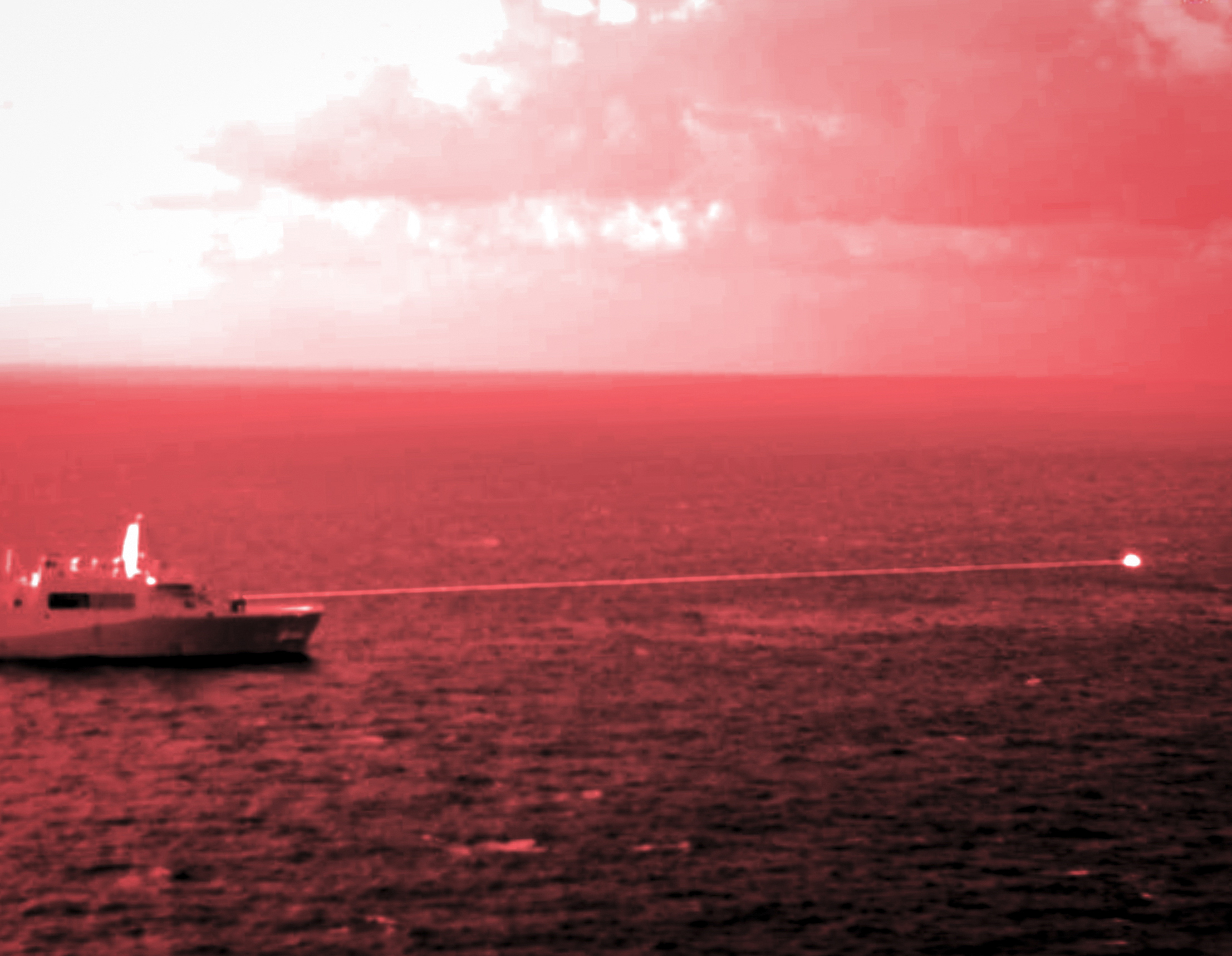
HASC’s Adam Smith Says Pentagon Must Assess Platform Capability for Modernization Efforts
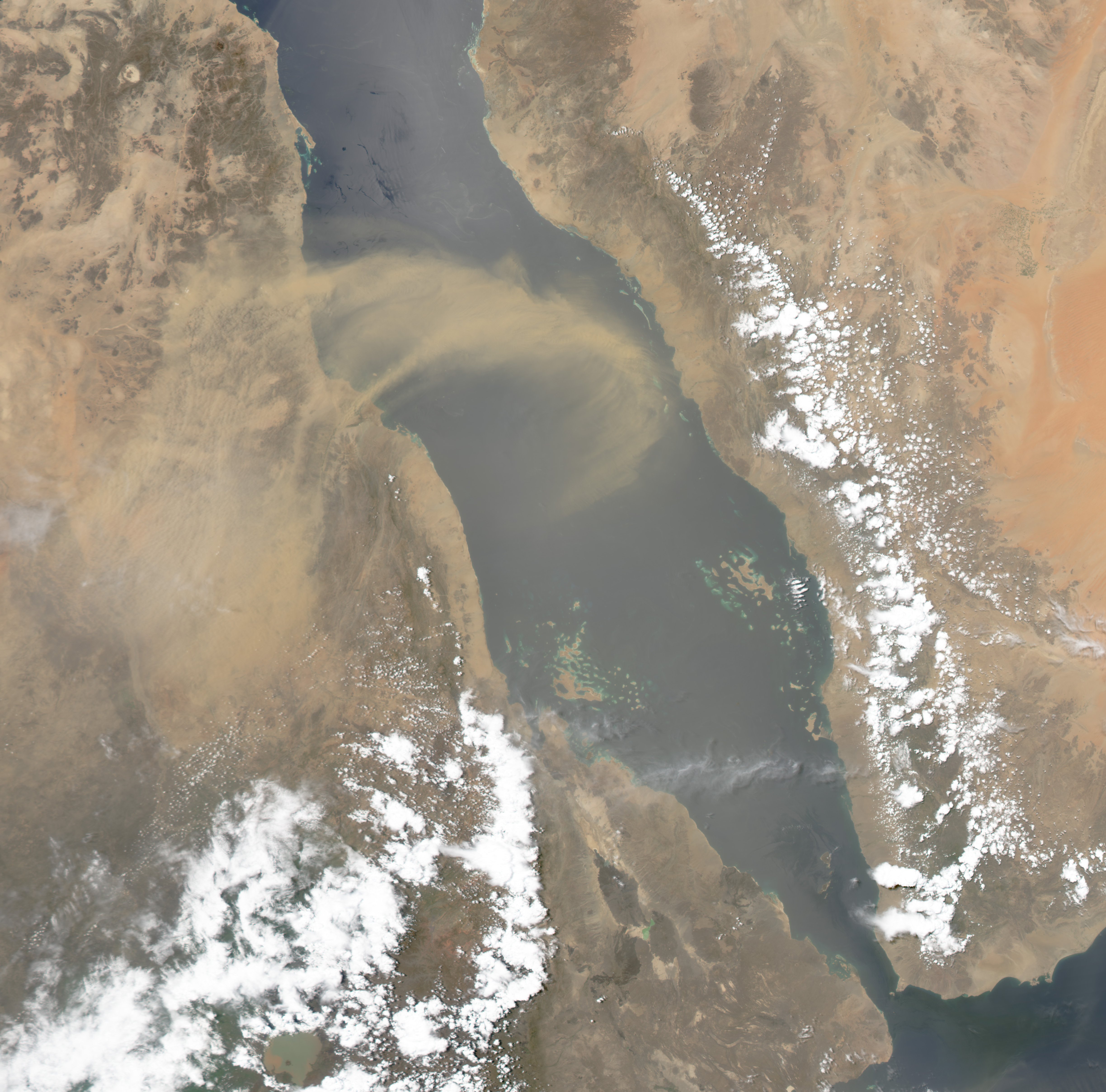
Report to Congress on Economic Effects of Red Sea Disruptions
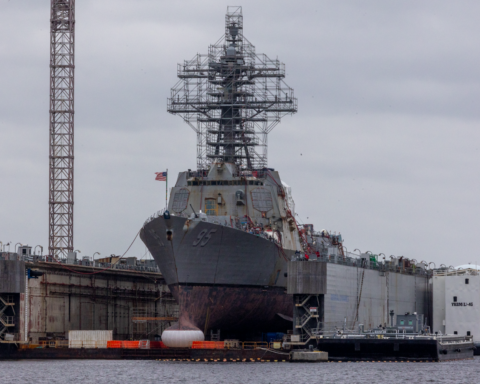
GAO Tells Senate Panel U.S. Shipyards Are Major Readiness Concern
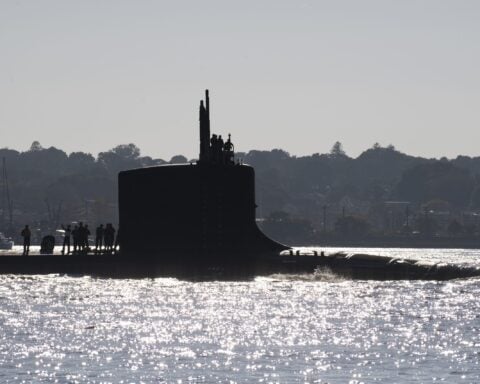
Senate Panel Questions Navy Submarine Build Rate, FY2025 Virgina-class Buy
Northern lights could be seen as far south as Alabama this weekend: NOAA
This is NOAA's first severe storm watch in nearly 20 years.
Americans across the country may get a chance to see the northern lights this weekend.
A series of solar flares and "explosions" from the sun may lead to geomagnetic storms that "can also trigger spectacular displays of aurora on Earth" from Friday evening through the weekend, the National Oceanic and Atmospheric Administration's (NOAA) Space Weather Prediction Center said on Thursday.
Because the geomagnetic storms are severe, Americans in many of the northern states and some in the lower Midwest will likely see the aurora borealis. But lights may be seen as far south as Alabama , according to the federal agency.
MORE: Powerful solar weather brings northern lights farther south
This is NOAA's Space Weather Prediction Center's first severe geomagnetic storm watch in nearly 20 years .
The solar flares, which began Wednesday around 5 a.m. ET, are associated with coronal mass ejections (CMEs) directed toward Earth.

CMEs are expulsions of plasma and magnetic field from the sun's corona, the outermost part of the sun's atmosphere, according to the SWPC .
When these ejections head toward Earth, taking as long as days or as little as 15 hours, they cause geomagnetic storms, which are disturbances in the magnetic field around the planet.
"Then fast-moving particles slam into our thin, high atmosphere, colliding with Earth's oxygen and nitrogen particles," according to NASA's Jet Propulsion Laboratory . "As these air particles shed the energy they picked up from the collision, each atom starts to glow in a different color," giving us the aurora borealis in the northern hemisphere and the aurora australis in the southern hemisphere.
The SWPC recommends traveling away from city lights to experience the full brightness of the aurora and to be looking at the skies within two hours of midnight, between 10 p.m. and 2 a.m. local time.
Beautiful ribbons of lights are not the only result of geomagnetic storms.
MORE: Pilot maneuvers plane to give passengers 'amazing' view of northern lights
These storms also have the ability to potentially disrupt communications, the electric power grid, radio signals and satellite operations. SWPC said it has notified operators of the various systems so they can take protective action.
Severe geomagnetic storms in October 2003 caused the northern lights to be seen as far south as Texas but it affected more than half of all Earth-orbiting spacecrafts and temporarily disrupted satellite TV and radio services. Additionally, several deep space missions had to be put in safe mode or completely shut down to prevent them from being disrupted.
"As far as the worst situation expected here at Earth, that's tough to say and I wouldn't want to speculate on that," NOAA space weather forecaster Shawn Dahl said during a media briefing on Friday. "However, severe level is pretty extraordinary. It's a very rare event to happen."
Top Stories

Exclusive: Mom speaks out after Air Force rescued son from cruise ship
- May 9, 7:36 AM

What led to DNA match, arrest of minister two decades after murders of 2 teens
- May 10, 6:03 AM
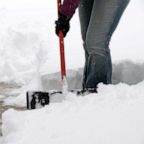
3 neighbors dead after fight over snow shoveling, authorities say
- Feb 3, 5:49 PM

Judge warns Michael Cohen to stop talking about Trump hush money case
- May 10, 4:11 PM

Forecast reveals where you might see the northern lights in the US this weekend
- May 10, 2:14 PM
ABC News Live
24/7 coverage of breaking news and live events

COMMENTS
To help you gain these skills and qualifications and begin your cruise ship captain career, here are some steps you can use: 1. Earn your high school diploma. Most cruise captain roles require some form of higher education, so completing high school or equivalent certification is an important step. If you are still in high school, consider ...
The qualifications required to become a cruise ship captain are not much different from that of merchant ship captains. A degree or diploma in Nautical Science is followed by onboard training as cadets or apprentice officers lasting several months. Thereafter, the aspiring candidates are considered eligible for the 2nd Mate examination, on ...
Responsibilities of a Cruise Ship Pilot. When a cruise ship approaches a harbor, the role of a cruise ship pilot becomes pivotal. After meeting the bridge team, the port pilot presents their plan for the passage. They discuss the route, weather conditions, tides, wind, clearance, traffic, hazards, and other important information.
Decision-making is a key part of being a cruise ship captain. "There are never two days alike," says Belinda Bennett of life on board Wind Star. "Broken machinery has to be dealt with, and ...
However, it does provide an advantage. Additionally, you need to have excellent grades, since most cruise ships hire captains who rank in the top five to 10% of their class. A bachelor's degree ...
5 main requirements for becoming a cruise ship captain are as follows: Education. Work Experience. Certifications. Captain Licensure Exams. Skillset. 9 key responsibilities of a cruise ship captain are as follows: Work with senior officers and crew members. Ship navigation and operation.
1. Work as a marine captain. You must hold the position as marine captain for a number of years before applying to become a cruise ship captain. Develop an excellent track record. In the vast majority of cases, marine captains are promoted after serving as deck officer or third mate on that ship.
The first step of becoming a cruise ship captain is obtaining your high school diploma. After that, it is required that candidates possess either a bachelor's or master's degree of marine science or marine engineering. It is preferred that the bachelor's or master's degree is obtained through a maritime college or academy.
When cruise ships arrive at a fairway buoy or breakwaters, they are met with a pilot boat. The ship's speed goes up to 21 knots and is reduced to 8-15 knots depending on what the pilot boat is ...
Developing an interest in maritime topics, travel and geography can help prepare you for this career. 2. Pursue an advanced degree. A bachelor's degree is a requirement to work as a cruise ship captain. You may also research specialised academies that provide you with the necessary skills.
What does a cruise ship pilot do? In ports in the U.S. and around the world, a pilot boards the ship 10 to 20 miles offshore via a pilot boat, which can be anywhere from 65 to 100 feet long. While ...
Most ship pilots must also have a Merchant Marine Credential (MMC). They can apply for an MMC at a U.S. Coast Guard regional examination center. Ship pilots are licensed by the state in which they work. The U.S. Coast Guard licenses pilots on the Great Lakes. The requirements for these licenses vary, depending on where a pilot works.
The compulsory state pilot directs the navigation of the ship, subject to the master's overall command of the ship and the ultimate responsibility for its safety. The master has the right, and in fact the duty, to intervene or to displace the pilot in circumstances where the pilot is manifestly incompetent or incapacitated or the vessel is in ...
Here are 17 types of hospitality jobs that are often available on cruise ships. 1. Steward. National average salary: $56,510 per year Primary duties: A steward on a cruise ship keeps the guests' rooms clean. They're an essential part of the housekeeping staff and maintain the standards of cleanliness aboard the ship.
Cruise lines with ships sailing European rivers employ mostly EU citizens; If your ship embarks in a US port you will need the C-1/D visa. You will usually apply for the visa after you get a job offer. Meet the language requirements relevant to your position. English is required by most cruise lines. Employees in passenger-facing positions on ...
The average harbor pilot at the Port of Los Angeles makes $434,000 a year, but also faces a one in 20 chance of dying on the job, according to a book from The Wall Street Journal's Christopher ...
A marine, maritime, harbour or ship pilot oversees the navigation of ships or boats through narrow or hazardous water channels. Marine pilots work with ship captains or chief officers to ensure the safety of passengers, cargo, port facilities and the ships themselves. Marine pilots typically board vessels when they're about to approach channels ...
A Nigerian pilot assists a U.S. Navy ship into the harbor at Lagos using nautical charts Grandes Eaux, pilot vessels Anse-aux-Basques, Les Escoumins, maritime estuary of St. Lawrence, Canada. A maritime pilot, marine pilot, harbor pilot, port pilot, ship pilot, or simply pilot, is a mariner who has specific knowledge of an often dangerous or congested waterway, such as harbors or river mouths.
The San Diego Unified Port District operates a VHF-FM radio station from Harbor Control Headquarters at Shelter Island for contacting merchant ships, port pilots, and other nearby stations. Channel 16 (156.80 MHz) is for distress, urgent, and safety messages, and for calling; channel 12 (156.60 MHz) is for port operations.
Members of the US Air Force rescued a mother and her sick child onboard a Carnival cruise ship hundreds of miles out in the open Atlantic Ocean last Saturday. The dramatic rescue unfolded onboard ...
A US Air Force rescue team airlifted a civilian passenger needing urgent medical care this past weekend from a Carnival cruise ship that was hundreds of miles out in open Atlantic waters.
Excellent customer service skills are among the most essential qualifications needed to work on a cruise ship. Cruise ship crew members must be able to deliver the high level of service that passengers anticipate. Being amiable, helpful, and capable of speaking clearly with passengers from various countries and backgrounds are all part of this.
Passports are Best. A passport is the best ID document for travel. Make sure yours doesn't expire for 6 months after your cruise ends. Learn more. Caution: Birth Certificates. U.S. Citizens can cruise with a U.S. birth certificate on most sailings from the U.S. But your birth certificate needs to meet the requirements.
2003 Western Ave, Suite 200 Seattle, Washington 98121. Dispatch only (24-hour): 206. 448.4455 All other business: 206.728.6400. [email protected]
NEW YORK (AP) — A cruise ship sailed into a New York City port with a 44-foot (13-meter) dead whale across its bow, marine authorities said. The whale, identified as an endangered sei whale, was ...
Two Baltimore harbor pilots were aboard the ship; harbor pilots navigate ships in and out of harbors because they have expertise with local navigation conditions.
Real ID application requirements. An example of a REAL ID from North Carolina issued by the DMV. ... Exclusive: Mom speaks out after Air Force rescued son from cruise ship. May 9, 7:36 AM.
A series of severe solar storms may lead to the northern lights being seen across the U.S. this weekend, including as far south as Alabama.